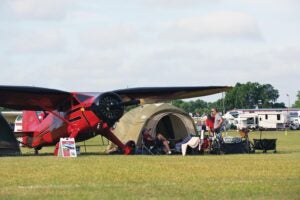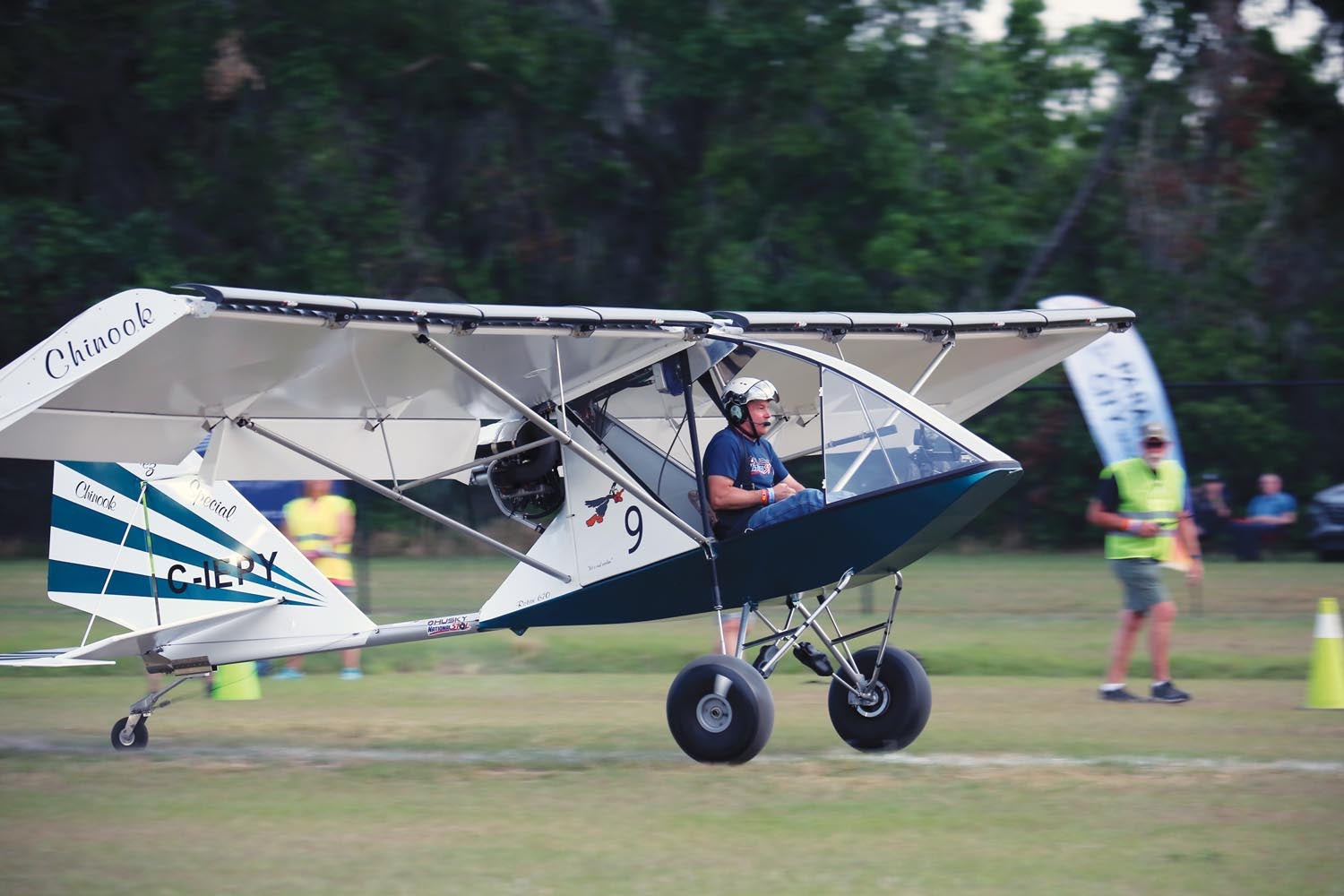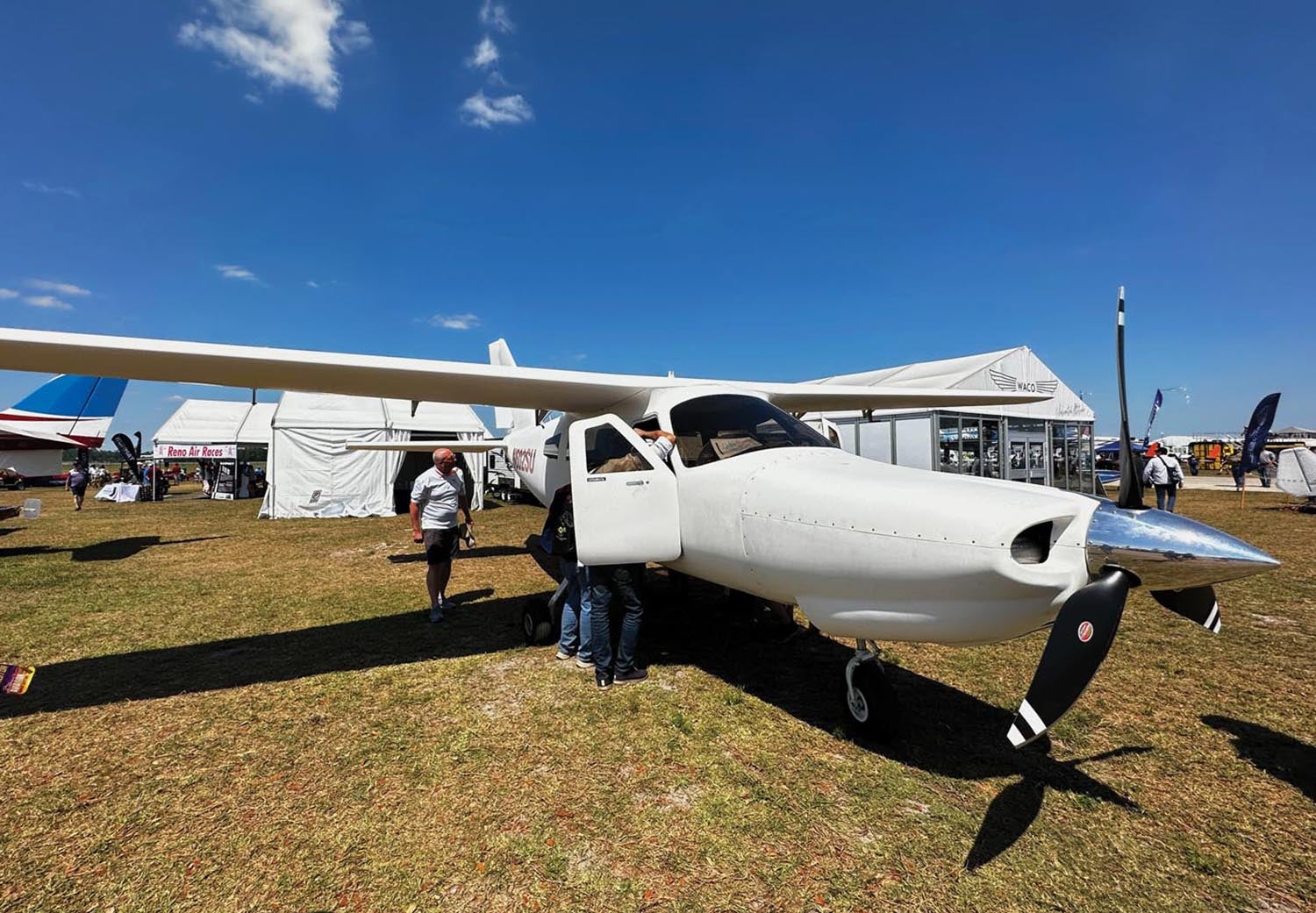
It’s not fair to call last year’s Sun ’n Fun a dud. It had, after all, come back from a COVID-related interruption in 2020 and an uncertain economic outlook in the intervening years to be a decently well-attended airshow for the casual consumer. You had your warbirds, you had your loud and violent-looking airshows. You had your ice-cream vendors and tchotchke stands. But it was not a strong show for news and, it seemed, one organized in such a way that unintentionally marginalized those flying in or camping with their homebuilts.
I’m happy to report this year was a great improvement. Under new CEO Gene Conrad, the homebuilt area was moved closer to show central and the camping spots relocated to higher ground. (Ironically, the show was warm and dry this year.) I walked around the homebuilt section twice while on-site and counted, at most, about 60 Experimentals. There’s a good chance more were in attendance but I wasn’t there when they were.
Plus, as seems always to be the case, a nasty storm front parked itself across the northern extreme of the state for the first few days of the event. I’m sure many fly-in pilots on the other side of the front gave it a few days to move before giving up and staying home. Next year, Sun ’n Fun will be a couple of weeks later, which might not help a lot but definitely won’t hurt the weather situation.

I can relate. Years ago, tasked with getting a Mooney from California to Lakeland for the show, I got to Mobile, Alabama, well after dark following a late departure from the West Coast. I so much wanted a cold beer and a warm bed but one look at the radar convinced me to keep going. A brutal cold front was descending, painting a big yellow-and-red banana on the radar from Houston to Portland, Maine. (This may be a slight exaggeration.) Had I stayed, the cold front would have overtaken me; it would have been a few days before I could get to Florida safely. I had the Mooney refueled, took a swig of FBO coffee and finished the trip. I landed in Lakeland around 3 a.m. knowing no cabs were running, so I crawled in the back and slept until awakened by the sun and a slightly perturbed lineman at the FBO pounding on the baggage door. I don’t recommend that last part.
While we had a repeat of the lingering cold front to our north this year, the weather gods smiled on Lakeland. What’s more, event organizers improved the situation for air-campers substantially by giving them their own shower facilities near the campsites and by positioning the large community space so it had a wonderful view of the afternoon and evening airshows. I’d heard a little grumbling that some facilities weren’t quite ready early in the week but that most of the kinks had been worked out quickly. Overall, I’d say those who flew in or drove in to camp had a better experience this year than last.
One last note on facilities. Event organizers provided a small but comfortable media building that gave us a place to conduct interviews and finagle the uncountable ones and zeros that constitute our show coverage as web stories and videos. I’m grateful for that, since last year’s arrangement was unworkable, which, sadly, also describes data connectivity this year. The local Wi-Fi broke and the cell towers got saturated. We try to post as much as we can live from the show but it’s a challenge when your 5G hotspot has all the throughput of a 2400-baud modem. (Go ahead, date yourself by knowing what that is.)
I sat in on an interview with Gene Conrad at the end of day one. He described how moving GA parking and camping to the east side and creating what he called “the island,” which combined a number of services for fly-in showgoers, was the result of listening to customers over the last few years and trying to reimagine the campgrounds. Key to those amenities was food service from early in the morning through a late dinner and a well-stocked store—with everything from bug spray to tents and sleeping bags—to make up for what you forgot to (or couldn’t) pack for the stay.
We also talked about the future of the event, which celebrates its 50th anniversary next year, and how that relates to expansion at Lakeland-Linder with Amazon’s growth and other factors. There are plans for a new runway, it’s true, but Conrad pointed out that nothing happens quickly in airport development. He knows, having spent more than a decade in airport management. That pace, he says, will give the show more than ample time to rework the grounds and preserve the event. He suggests, and I tend to agree, that those who fret about dismantling parts of the airport that serve the show are forgetting the needs of the airport the other 51 weeks of the year.
New Stuff
I don’t know about you but I went to shows like this as a young pilot for inspiration, to see what’s new, to look at old airplanes and see friends. I’d say Sun ’n Fun scored on all fronts this year. There was enough new-news that Steve Ashby (as well as the crew from sister outlet AVweb.com) and I found ourselves with plenty to chase down and talk about. We covered most of this in our digital coverage, but I’ll touch on a few highlights here.
Bose introduced a new headset, the A30. Two things surprised me about it. First, that the predecessor A20 was still using analog noise-reduction circuitry that, while being quite a ways developed from the first Bose ANR in 1989, still owes a lot to it. Bose took the opportunity to make tweaks to the A30 in addition to fitting it with fully digital ANR, including reduced weight and a quick-change cord to support a left- or right-side microphone. Second, I was surprised that it didn’t embrace some of the new tech in the Lightspeed Delta Zulu, such as the internal CO detector and pilot-adjustable
frequency response. (Actually, the second part of that doesn’t surprise me. Bose was never on the user-adjustable kick for its home audio equipment, so why change stripes here?)

I got a chance to poke around the prototype Comp Air 6.2 that arrived midweek. It’s even bigger than I thought it would be and packs some clever design touches to maximize interior volume. It’s still very early in the flight-test phase but it’s great to see this airplane arrive in the flesh when quite a few nicely CAD-rendered designs are still just pixels.
Also in the flesh was the CubCrafters Carbon Cub UL, making a big splash as the first to fly with the new Rotax 916. Looking to expand into international markets where “ultralight” regs permit the kind of freedom we have here with Experimental/Amateur-Built, CubCrafters put the Carbon Cub SS on a pretty radical diet, with more carbon, titanium in place of steel and the lightweight 916 up front. This airplane is also still very early in its gestation but I’ll be damned if it doesn’t look production ready as it sits. Makes me want to roll the old Coleman up to Yakima and camp out beside the factory, waiting for a chance to fly it.

The Rotax 916
I’m duly impressed with the new 916, mainly because the core engine is stout enough to embrace a 19-hp gain (12%) for takeoff on the same displacement and compression ratio. It also has a 2000-hour TBO right out of the gate, beating the familiar 915 by 800 hours. (The company is likely to extend the 915’s TBO as well, we just don’t know when.) With the 916, Rotax basically turned up the boost and made some minor modifications (including to the exhaust system) for the additional power.

It’s true that the maximum-continuous power only grows by 2 hp (the 160-hp figure is for the first 5 minutes) but let’s put that in perspective. Your familiar Lycoming IO-360 makes 180 hp for takeoff, true, but it’s down to the 916’s max-continuous power of 137 hp (76% of the IO-360’s max power) somewhere near 7000 feet density altitude. The Rotax, turbocharged, keeps going as you climb. Maximum altitude is 23,000 feet, with full power available to 15,000 feet. That’s a 101° F day out of Leadville, Colorado, where a Cessna 172 would barely have enough power to taxi. (That, too, may be an exaggeration.) And let’s also not forget that this is an 83-cubic-inch engine.
Part of Rotax’s magic sauce here is full electronic control of injection, ignition and boost pressure. This is now a well-known system handed down from the 912 iS and the 915 iS that has proven itself in the field. I’ve heard grumbling from the oldsters that all the iS-line engines are heavily electricity dependent. But the 916, like its predecessors, uses two injection/ignition ECUs running in parallel, redundant fuel pumps (either of which can supply the engine’s needs at full power) and a split charging system that dedicates one channel to running the ECUs and pumps and one to providing power to the rest of the airplane. Should that first generator fail, the second one can take over and run the engine. Should both fail, a modestly sized battery could keep the engine turning long enough to get on the ground.
What the 916 isn’t is a today-solution, drop-in replacement for legacy engines in existing designs. It’s just too small and too light to fit into an airplane already penned for a four-cylinder, air-cooled engine without significant airframe modifications for packaging and CG issues. You can’t really blame Rotax for not making the 916 heavier. But you can hope there’s a bigger engine capable of, say, 180 to 210 hp under development somewhere in Austria.
Task-Based Phase I Update
Just after Sun ’n Fun, EAA held a seminar on the new task-based Phase I flight testing we reported on last month. It clarified a few items that came up after the initial announcement. For starters, not all of the paperwork had been done on the FAA’s end, so an early set of guidance had not been updated that enabled the new program. However, that problem is expected to be resolved very soon.
EAA is also going to revise its “Flight Test Manual” to better fit into this program, though, reading by the controlling documents, even the existing one would be acceptable for the shorter flight-test program. Supposedly the FTM will be refined for the task-based system and even reordered slightly. During the seminar, Tom Charpentier (EAA’s government relations director) also hinted that the FTM might be updated to better reflect the use of modern EFIS and data-recording technologies. Progress all around.














Marc,
Thanks for the update on the 916 Rotax. To your wish for a larger HP Rotax, there was a 300 HP version that was prototyped and ready to announce when Lycoming swooped in and bought up the rights to it eliminating their competition.
I have seen the brochure and talked to a person involved in the project and have no doubt about the truthfulness of this story.